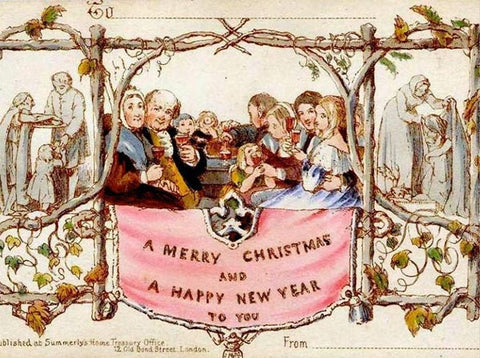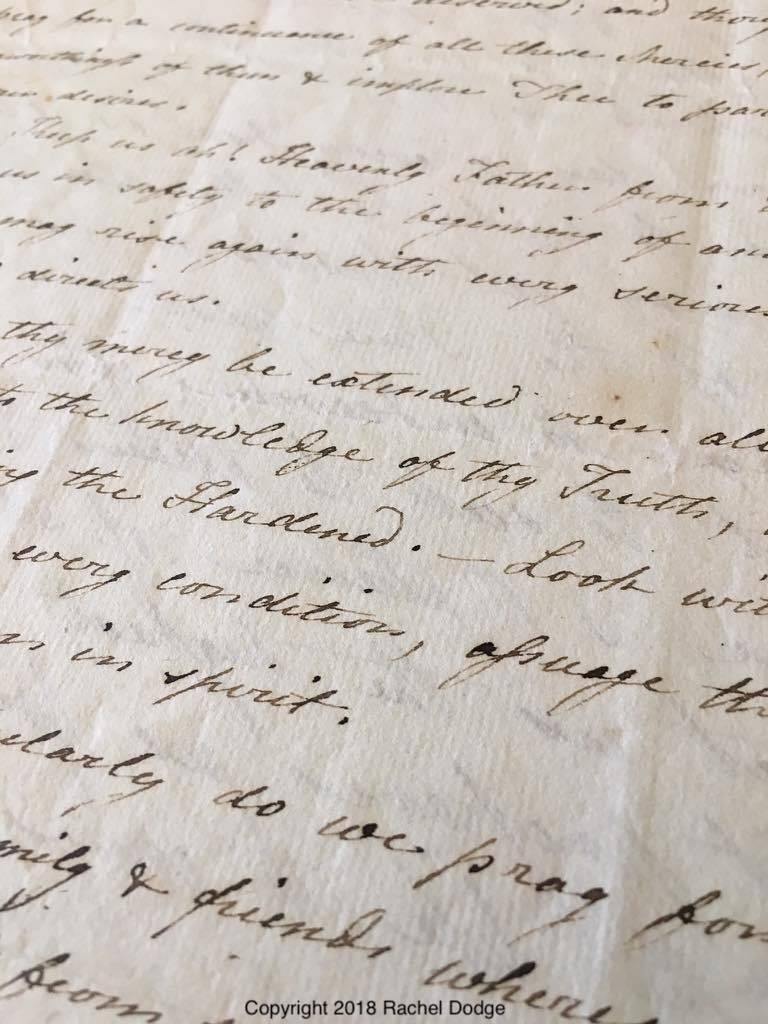The History Of Christmas Cards In Britain

It is thought the very first card celebrating Christmas was sent in 1611 by a gentleman named Michael Maier, to the then king of England, Ireland and Scotland James VI and I. Although it looked much more like a manuscript than the modern card we know today, this was the first recorded instance of a card like item being sent to celebrate the holiday season and profess a personal sentiment from one person to another. Paul Goodall has noted the Rosicrucian elements of the card, and created this diagram to show what it looks like as no photographs exist because of its delicate nature:

The card was discovered in 1979 by the researcher Adam Mclean, who was based and working in Glasgow. Mclean documented that the card measured around 84cm by 60cm, rather large in comparison to standard cards today. Whilst we cannot be certain at what point the manuscript like document was folded, the fact the four folds separate the five columns that feature in the document suggests we may well consider them as part of the original design, leading us to see the document as an early version of the Christmas card. The following address featured at the very top of the document:
"A greeting on the birthday of the Sacred King, to the most worshipful and energetic lord and most eminent James, King of Great Britain and Ireland, and Defender of the true faith, with a gesture of joyful celebration of the Birthday of the Lord, in most joy and fortune, we enter into the new auspicious year 1612."
The next major development in the history of seasonal cards came in 1843, when the civil servant Henry Cole (born in Bath, 1808) commissioned his artist friend John Callcott Horsley to create cards that people could send to their friends and relatives to celebrate Christmas.
Horsley is widely credited with being the first to design cards for the holiday season, but in his time he was also a successful genre painter. Some of his work is now on display at the Victoria and Albert, making a delightful connection between his legacy as an artist and their expansive collection of greetings cards, over half of which are related to Christmas.
The card had caused some controversy when the first thousand copies were printed because it depicted a small child being given and drinking wine. Horsley had designed the card so its message was twofold, depicting both charity and celebration. According to provenance research conducted by the V&A, the design was meant to show "three generations of the Cole family raising a toast". Rather charmingly, Horsley personalised his card to Cole by drawing a small portrait of himself in the bottom right corner instead of his signature, with the sign off "xmasse, 1843".






1 comment
Fascinating
Karen
Leave a comment
This site is protected by hCaptcha and the hCaptcha Privacy Policy and Terms of Service apply.